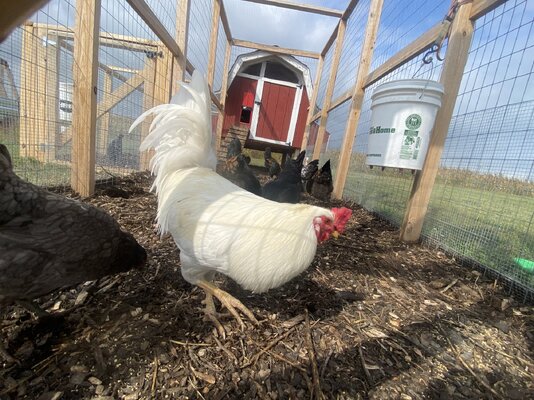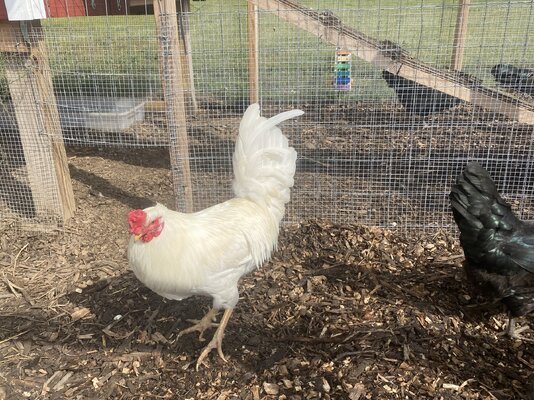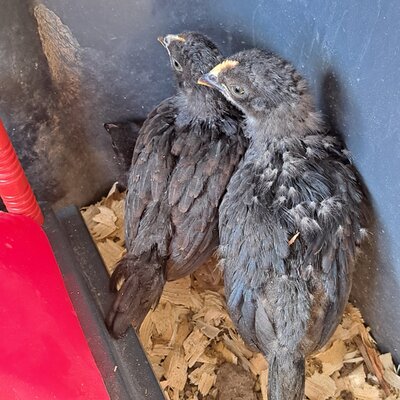Tstraub
Crowing
Here is my only mix breed. he is the only survivor from my first time hatching eggs. I got the eggs from a friend that wasn’t intending to breed them so he didn’t pair up any specific birds for breeding so I can’t say positively what his parents were. But he hatched from a light brown egg. Mother could have been ISA brown, barred rock, or EE without the blue gene. Father was either leghorn or EE. My best guess based on all possible parents and the way he looks it that the cross is leghorn x ISA brown.





